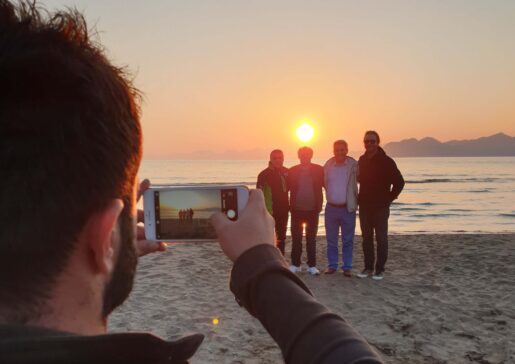By Julien Sémelin, Manager, Mediterranean Basin
Six months ago, I attempted to define the different types of partnership that were formed on the basis of our 25 action plans. We saw that certain groups of partners formed fully-fledged steering committees, where each organisation plays a well-defined role in order to implement a joint action plan. Other groups, meanwhile, established more flexible relations, in order to promote communication and synergies.
The Foundation has just entered the mid-term evaluation phase of its 2016-2022 strategy. As Ilke Tilders mentioned in a previous blog, this analysis will be based on discussions between our partners, which will take place within the context of our Outcome Action Plans (OAPs). And, from the Foundation’s point of view, a mid-term evaluation means funding decisions for the final phase 2020-2022. In other words, we absolutely must rely on solid, functional partnerships.
Barthélémy Batieno of PRCM, a partner involved in several OAPs in West Africa, already provided us with a partner’s point of view of what constitutes successful collaboration. For the party implementing a project, successful collaboration is mainly based on the principle of subsidiarity, permanent cooperation and solidarity between partners. However, how do we see things from the perspective of the party that funds these projects? I asked my colleagues about this issue (and gave it a great deal of thought myself too!). For the moment, this is how we see it:
Firstly, we feel that there needs to be a real desire to collaborate. This seems a bit like wishful thinking because, as you may well be wondering, how can sincerity be measured? However, there are a few indicators – for example the honest approach of explaining one’s difficulties and failures to others. Frequent discussions outside of formal meetings can also teach us about what motivates people to collaborate. As does the flexibility to adapt one’s plans in accordance with guidelines discussed in groups. We know that flexibility facilitates collaboration, but can it be said that flexibility encourages sincerity? That’s a great question for a philosophy exam!
We also feel that it is important to see our partners developing joint actions. This is also something to ponder on for a moment, because it sums up the entire focus of our last strategy. In some cases, observing new relations being formed between partners who were not used to working together already represents a key success factor. However, in general, exploring ideas and identifying opportunities for joint action takes time. Considering our partners “learnt” to work together during the first phase of our strategy, we expect to see an ever-increasing number of joint actions in this second phase.
It is important to remember that we are a funding body that is entering its final chapter, and nothing would make us happier today than to see our partners looking together for funding elsewhere. Because the post-2022 period when MAVA’s funding will have ceased motivates us just as much as our final funding cycle. And, in our opinion, search for joint funding reveals commitment to a common goal and a relationship of trust. In other words, a successful partnership. With the added bonus of the guarantee that these partnership dynamics will continue even after MAVA’s funding has ended.
In conclusion, I am sure that by the end of this mid-term evaluation we will have learnt a lot more lessons, and will be able to give advice to others wishing to embark on the same path we took. An interesting exercise might be to draw a parallel between the type of recommendations made by our partners and the type of partnership eventually formed. A good subject for a future blog post!

